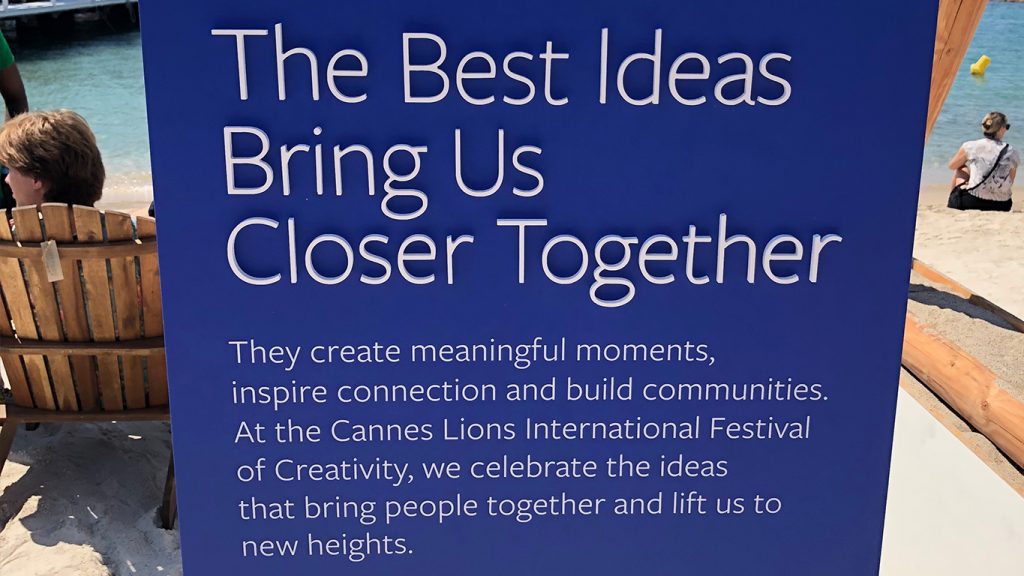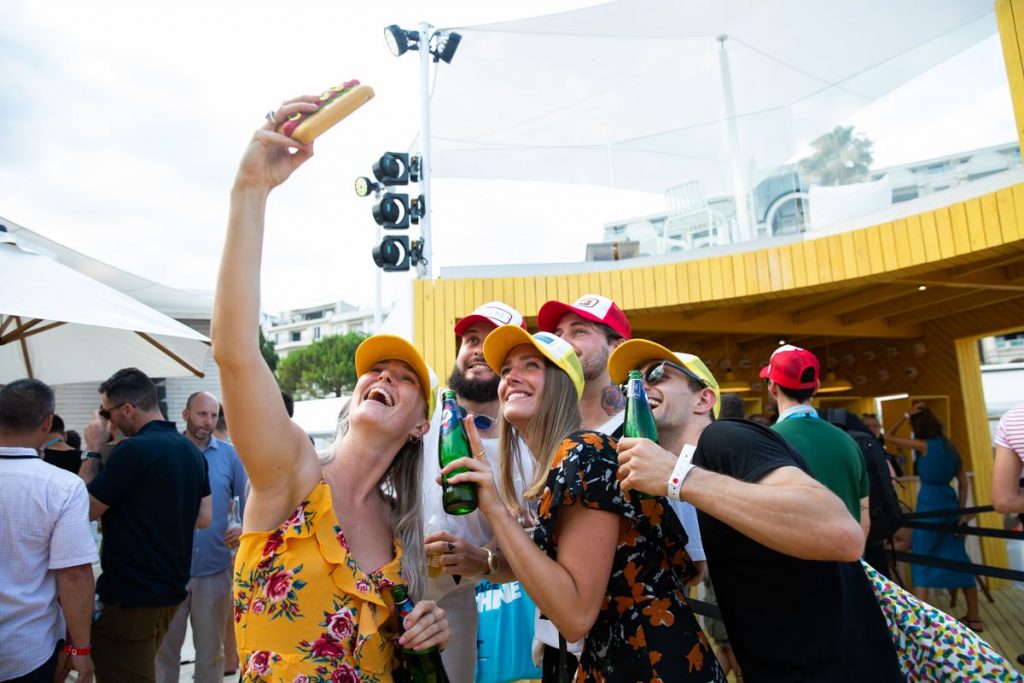2019. Let’s get personal.
For me, personalisation is the one major guiding principle that’s going to drive change across the experiential industry over the next 12 months. It’s firmly embedded in our digital lives and we’re now expecting it in every facet of our interactions with brands.
The entire live brand experience sector is at an inflection point, with change coming from all sides. Attendee expectations are more complex than ever before. Brands struggle to connect with customers via traditional communication methods. Longstanding and previously successful events are collapsing. Agencies struggle to monetise creativity from traditional offerings and technology is building complex invisible barriers between people. However, I’m not pedalling doom here – the industry is perhaps richer with opportunity right now than ever before.
Many brands, most event organisers and even some agencies need to first learn to focus on people in the broadest sense, before attempting to master the nuances of tailoring services or products for specific individuals. In the context of our sector, personalisation will influence change in different ways across five component parts: attendees, brands, events, agencies and technology.
The attendees
Personalisation is powerful. People want to feel like they belong to something, that they matter and that their brand engagement offers a good value exchange. Marketing is far less annoying when it’s relevant. Attendees aren’t just open to personalisation, they actually expect it – and because it removes friction from an experience, they’re even starting to actively demand it.

The brands
Forrester’s 2018 Customer Experience Index showed that companies continuously struggle to create and sustain a human connection with their customers. In a world with ever-increasing ways to connect with each other, consumer trust is actually at an all-time low. Plus Interbrand’s 2018 Best Global Brands report found that leading brands are driven by a desire to be useful, to create products, tools and services that actually solve customer problems, and to leverage marketing to serve and not just sell. A focus around customer-centricity. Personalisation.
Brands generating the most stable growth over the last decade are those that prioritise relevance and responsiveness. Many even co-create solutions to bring the customer’s voice into every aspect of their business and invest in future-forward customer exploration. This is then coupled with a responsive culture that can flex and change so that the brand constantly stays relevant.
The events
In September 2018, the Paris Motor Show flopped epically – half the industry chose not to attend. Photokina 2019 has just been cancelled, CeBIT was recently scrapped after 32 years and rumour has it that Baselworld will be over by 2020. These are amongst the biggest and longest-standing events in Europe, representing enormously valuable market sectors.
This might lead you to believe the hype (in some corners) that trade shows are on the brink of extinction, but I don’t think that’s true. In the broader sense, event attendance is actually increasing. The problem is the failure to observe the shifting expectations of visitors and to recognise the fragility of the participating brands – and then adapt accordingly.
The formula for a successful event (be it trade or consumer focused) is changing. Events that focus first on the attendee experience are on the rise. Witness ComplexCon, a groundbreaking (and thriving) series of events that combine a festival mentality with an exhibition to bring together pop culture, music, art, food, style, sports, innovation, activism and education. Money20/20 has risen quickly to become a successful annual event across four continents by injecting fun and disruption into the notoriously stale finance sector. Publication Fast Company runs pioneering innovation festivals, and the likes of SXSW and Cannes Lions Festival continue to grow year-on-year.
These events feel celebratory in nature. They promote topical content agendas and encourage creativity. Crucially, they evolve quickly – responsive to all the glorious peccadillos that make us human. They tend to elicit a village feel in their execution and build communities around their attendees. They encourage learning and participation whilst crafting a personalised visitor experience where content consumption can be customised, creativity is celebrated and human connection is encouraged at every junction.
There’s a strong future for business events, but those that thrive will probably be smaller multidimensional networking occasions – social gatherings that curate bespoke audiences and focused sponsorship of cultural happenings.
The agencies
The agency landscape is in flux. Adam & Eve was crowned Agency of the Year at Cannes Lions in June 2018. In parallel with this, the founders sold the 10-year-old business and some are using their earn outs to set up a new creative consultancy. They recently explained to Campaign: “Everyone appears to be running away from being a creative business and I think people need to run towards that. There’s been a collective loss of nerve.”Then there’s WPP working hard to consolidate and simplify their agency offerings by merging JWT and Wunderman and combining five branding/design agencies to become Superunion.
Huge creative businesses have survived until now by maintaining client relationships, rather than nurturing innovation. Agile new models for agencies will have creativity at their core, centred on the power of brilliant creative ideas with personalised service. Teams will be small, fast and powerful, with client work fulfilled by passionate people.
Then there’s the ‘virtual agency’ model. This concept isn’t new, but it’s changing the shape of the industry. It started as a bottom-up movement from brave creative practitioners fed up with the slow, expensive, overstaffed and bloated agency model. Now it’s become a tangible offering that many major brands are leaning on. The principle of small-scale, hand-picked bespoke teams that offer highly personalised client servicing with fast-paced idea generation is universally desirable.

The technology
By capturing and analysing behavioural data, we can provide individual experiences tailored to attendee interests to make events more engaging and ultimately more effective. Suites of new technology are empowering personalisation at every touchpoint pre, during and post event.
Complex AI computer vision systems that feed us targeted content in physical spaces are revolutionising retail and ambient advertising. Next generation chatbots are bringing personality and customisation to automated customer service. Facial recognition systems enable friction free check-in. NFC technology within smart badges can trigger personalised signage around a space. Smarter event apps build curated agendas from user data. AI matchmaking engines interpret attendee social media profiles to drive networking opportunities, and thanks to affordable on-demand printing, personalised branded merchandise has become more popular with companies like YR Live offering amazing customisation experiences like Google’s Doodle caps
Personalisation is already firmly on the agenda for smart agencies, ambitious brands and pioneering event organisers. New combinations of technology will expedite this movement as artificial intelligence becomes a more mainstream reality, but creativity, bravery and innovation will be the driving force behind success. For the last 25 years, 2LK has put people at the core of our work. Whomever the client and whatever the success metric, there’s always been a fierce commitment to those at the heart of the experience – converting the passive to the active, transforming observers into participants and agnostics into ambassadors. Though it might seem daunting, the scene is set for brave brands, events and agencies to dominate.

More reading:
Why attracting the right agency matters.
Five Cs of AI and live brand experiences.